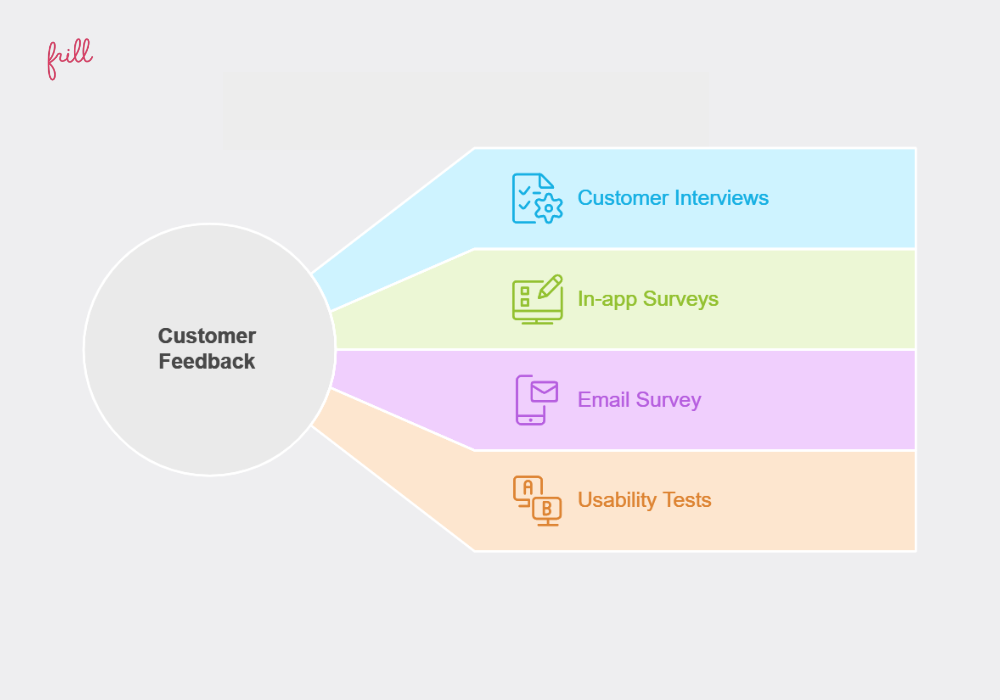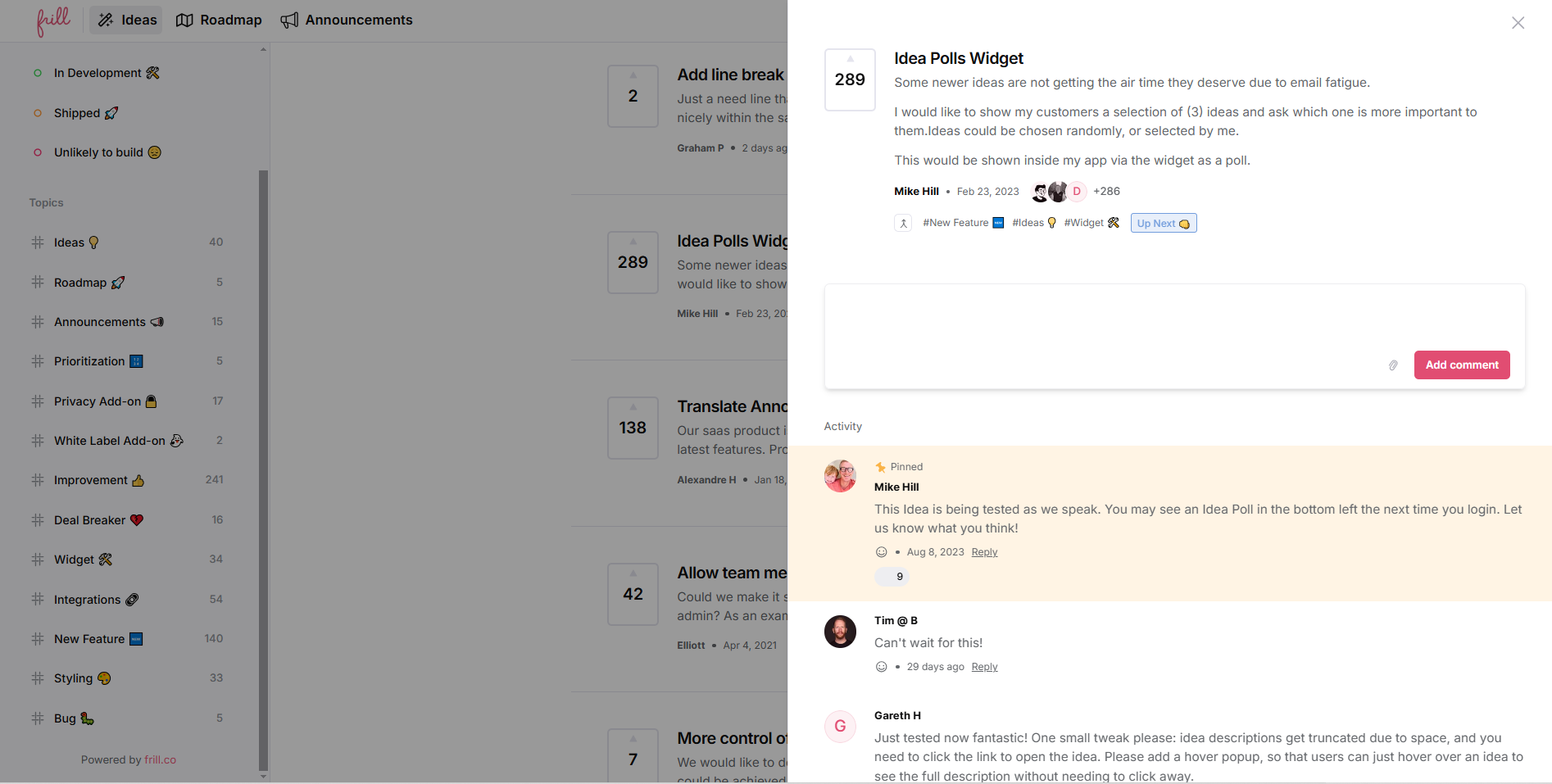Active vs Passive Customer Feedback: Which is Best for SaaS?
Last updated on Mon Dec 30 2024
In the SaaS game, your customers are the real MVPs. If your product isn’t solving their problems, you’re already falling behind. The key to staying ahead? Listen to them. Their feedback is the magic ingredient that helps you build a product they’ll love and keeps them happy every step of the way.
SaaS businesses should adopt and implement the best method for collecting customer feedback. Many SaaS businesses struggle with feedback management, making it challenging to navigate the competitive landscape.
You will learn the types of customer feedback, their benefits, the best methods of feedback collection, and how to balance both types for good customer service.
Types of Customer Feedback for SaaS
There are two main types of customer feedback for SaaS products. They are categorized based on the method of gathering and the information shared by the customer. The types of feedback include:
Active feedback
Passive feedback
Active Customer Feedback in SaaS
Active feedback is also known as direct feedback. A type of feedback that involves the direct collection of opinions, ideas, suggestions, and information from customers.
This type of feedback is initiated by businesses through deliberate efforts to know what users think. Customers are directly asked for their input in a structured way.
Importance of Active Customer Feedback
You can gather active customer feedback via surveys, polls, interviews, etc. has several advantages. It offers the following valuable benefits for SaaS businesses:
Active feedback provides information about which product’s features satisfy customers’ needs.
The data gathered through the feedback loops helps to identify issues that need to be addressed immediately.
helps you know the features and functionalities to improve on quickly.
Through direct interaction with customers, relationships with customers are strengthened and enhanced.
Collecting feedback from customers shows your commitment to meeting their needs, thus enhancing customer engagement.
The use of surveys to collect information allows for data to be quantified and analyzed easily.
How to Collect Active Customer Feedback

There are various methods to actively and effectively collect customer feedback for SaaS. The SaaS feedback methods include:
1. Customer Interviews
This involves asking customers questions about your product or services. These questions are structured and predetermined. Users are expected to give answers to those questions.
Users freely express their thoughts, opinions, and perceptions on whether the product satisfies them or not. The problems they experience with the product’s features are also shared.
This method allows for rich data. You will gain an in-depth understanding of their needs and goals.
2. In-app Surveys
As customers interact with the product, information can be collected. While they are on the product, specific actions by them can prompt the survey, and data is collected quickly.
Some great in-app surveys to use are:
Net Promoter Score (NPS)
The NPS evaluates whether customers are loyal to your product or not. You get to know how likely your product or service can be recommended to other friends or colleagues. Users must have engaged well with your products’ features before you asked them for their loyalty.
Customer Satisfaction (CSAT)
It assesses how happy and satisfied your customers are with your product. It is used to measure the quality of the product. Questions like, “How would you rate your overall satisfaction with the product?” You can use an open-text field or emojis depicting different satisfaction levels for them to share their experience.
Customer Effort Score (CES)
This measures how easy it is for customers to use your product. CES helps share insights on whether they are able to navigate it quickly or not. If they are experiencing difficulty or friction, you’ll be able to fix the problem.
Churn Survey
This survey is triggered when customers want to abandon your product and explore other alternatives. With this in-app survey, you can know if they want to cancel their subscription and quickly implement actions to tackle it.
In-app surveys guarantee a faster and higher response rate, triggered at the right time.
3. Email Survey
Opinions can also be directly gathered through emails. Use email surveys for users who do not regularly visit your product. Make sure that the surveys are short, engaging, and personalized. Also, include a call-to-action at the end of the survey.
4. Feedback Forms
This method of feedback is very structured. These forms are embedded within apps, and websites. or products to get comments or suggestions from customers. This makes it easier for users to access them. Spontaneous feedback on specific issues is easily gathered through feedback forms.
5. Usability Tests
This is a type of active feedback used to identify areas, features, or functionalities that need to be improved. Before the final development process, some users can test the usability and effectiveness of the product. Through this, you can get firsthand information on where they experience hurdles with the product and instantly fix them.
Active feedback provides clear, targeted, and specific insights into the needs and expectations of the customers. Users can share their perspectives and insights on your product. Hence, allowing you to make better and more informed decisions about your SaaS product.
Passive Customer Feedback in SaaS
Passive or indirect feedback is the information collected from customers indirectly. In this type of feedback, opinions, suggestions, or contributions are not directly asked for. Instead, it is initiated by the users.
This feedback is collected during various interactions with the customers, either face-to-face or virtually. It is important to take note of all passive feedback to make informed decisions.
Importance of Passive Customer Feedback
Information instigated by customers is as important as active feedback. The benefits are:
This type of customer feedback does not disrupt the customers’ experience with the product.
It allows users to provide feedback in their own time.
Passive feedback leads to increased loyalty because they know that you are willing to listen and meet their needs.
How To Collect Passive Customer Feedback
Passive customer feedback can be collected with different approaches. Here are some of the best approaches to leverage:
Social media monitoring
Customer support ticket
Product usage analytics
1. In-app Feedback Widgets

This method allows businesses to collect information about the product. Put small widgets in your product to track feedback regularly.
Product managers can collect valuable insights without interrupting the customer experience. Widgets can be positioned at different interaction points.
2. Social Media Monitoring
According to Global Social Media Statistics, 63.8% of the world's population, or 5.22 billion people, have active social media identities. Therefore, it is evident that people are actively present online, including your customers.
They can use social media to share their thoughts, concerns, insights, and opinions about your product. Monitor social media platforms like Facebook, Instagram, LinkedIn, Twitter, etc. to track and stay informed about trends and information on your product.
Create an online presence specifically for your product to collect related information. Also, use brand monitoring tools to gather valuable information.
To make your social media interactions more personal, take it a step further by using an AI talking head in your videos. This not only engages your audience but also gathers valuable feedback to enhance the overall customer experience.
3. Customer Support Tickets
Customer support tickets are records of issues, inquiries, or requests that are submitted by customers. It helps us to capture feedback from users who have reached out for help.
You will be able to track and capture common user problems and feature requests by analyzing customer tickets. Ensure to organize them into specific segments to gain insight into the cause of the problem.
5. Product Usage Analytics
Another passive feedback method is product usage analytics. It explicitly shows customers’ behavior with your product. By leveraging this method, you get to know which feature is used the most and where it experiences friction.
Maximize this method to improve product delivery and customer satisfaction for your SaaS business.
Balancing Active and Passive Feedback
In the collection of customer feedback for SaaS, both active and passive feedback are important for successful product delivery. Determining which type to use depends largely on the specific needs and goals to be met.
However, it is better to combine both methods to have an all-round and comprehensive understanding of what your customers need. Some feedback can be collected either actively or passively. This way, you can collect detailed and rich information to guide you on your product journey and make better decisions via different methods.
Frequent gathering of customer feedback will help to make a customer-centralized product while also aligning with the business goals. Thus, ensuring business success in the long run.